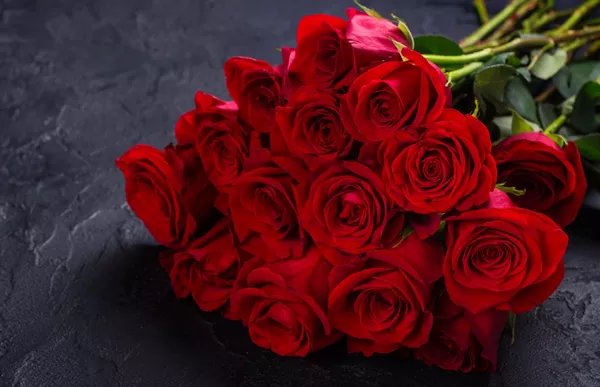Throughout history, flowers have served as messengers of emotions, sentiments, and profound meanings. One of the most cherished and enduring messages conveyed through the language of flowers is that of unconditional love. The power of a simple bloom to encapsulate the depth and purity of affection is a testament to the enduring nature of this sentiment. In this article, we delve into the captivating world of floral symbolism, focusing on the flower that resonates most strongly with the concept of unconditional love. We’ll also explore the cultural, historical, and emotional dimensions associated with this symbol.
The Rose: Emblem of Unconditional Love
Among the plethora of blooms that inhabit gardens and landscapes, the rose stands tall as the unrivaled symbol of unconditional love. Renowned poets, writers, and artists have all immortalized the rose in their works, extolling its beauty and meaning. The red rose, in particular, stands out as the quintessential embodiment of deep affection. Its vibrant hue is a beacon of passion and commitment, while its velvety petals evoke feelings of tenderness and warmth. From classic literature to modern pop culture, the red rose has cemented its place as a timeless emblem of unwavering love.
Cultural Significance and Historical Reverence
The concept of associating flowers with emotions is not confined to a single culture; it spans across continents and civilizations. In ancient Greece, the rose was linked to Aphrodite, the goddess of love and beauty. Similarly, in Roman mythology, the rose was tied to Venus, the counterpart of Aphrodite. This cross-cultural connection underscores the universality of the rose’s symbolism as a vessel for expressing love, particularly the selfless and enduring kind.
Throughout history, the rose has adorned the regalia of monarchs and emperors, symbolizing both their authority and the deep affection they held for their subjects. It graced the gardens of medieval knights and was used in ceremonial rituals to signify loyalty, devotion, and fidelity. This historical reverence has solidified the rose’s place as a token of enduring love that transcends time and social boundaries.
Love Beyond Words: Emotional Resonance
Unconditional love is a sentiment that often defies adequate expression through words alone. In such instances, the language of flowers steps in as a medium to communicate what words fail to convey. Presenting someone with a bouquet of roses, particularly the red variety, is a silent proclamation of feelings that surpass mere verbal articulation. The act of gifting flowers is a gesture that speaks volumes, capturing the depth and intensity of emotions that can be hard to put into phrases.
Moreover, the act of receiving flowers, especially roses, has a profound impact on emotional well-being. Scientific studies have shown that the presence of flowers can elevate mood, reduce stress, and trigger feelings of happiness and appreciation. The connection between flowers and positive emotions aligns perfectly with the idea of unconditional love, as both are uplifting and nurturing experiences.
Love in Various Shades: Different Meanings of Roses
While the red rose is the most widely recognized symbol of unconditional love, other rose colors also hold distinct meanings. White roses, for instance, are often associated with purity and innocence, making them an ideal choice for weddings and new beginnings. Yellow roses represent friendship and joy, while pink roses convey admiration and gratitude. By understanding the spectrum of rose colors, individuals can personalize their messages of love and affection according to the specific nuances they wish to convey.
Expressing Love in Every Petal: Art and Literature
The rose’s pervasive influence extends to the realm of art and literature, where it has inspired countless masterpieces. From Shakespeare’s romantic sonnets to Van Gogh’s vivid paintings, the rose has taken center stage as a muse for creators seeking to encapsulate the profound essence of love. This artistic representation reinforces the notion that the rose is not merely a flower but a conduit for expressing the most complex and profound human emotions.
Modern Expressions of Unconditional Love: Beyond Roses
While the red rose remains the archetype of unconditional love, contemporary interpretations have broadened the spectrum of blooms that can convey this powerful sentiment. Orchids, known for their exotic beauty, have also come to symbolize rare and enduring love. The tulip, with its diverse range of colors, can represent various aspects of love, from deep affection to everlasting commitment. Regardless of the flower chosen, the underlying principle remains constant: the act of giving flowers as a token of love transcends time, cultures, and trends.
Conclusion
In the intricate tapestry of human emotions, unconditional love occupies a central and profound space. Through the eloquent language of flowers, particularly the rose, this extraordinary sentiment finds its perfect expression. From the cultural and historical significance of the rose to the emotional resonance it evokes, the symbolism of unconditional love is as enduring as the blooms themselves. As we continue to navigate the complexities of human relationships, let the language of flowers guide us in expressing love that knows no bounds – a love that, like a well-tended rose, thrives with care, time, and unwavering devotion.


